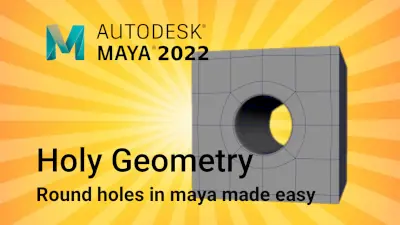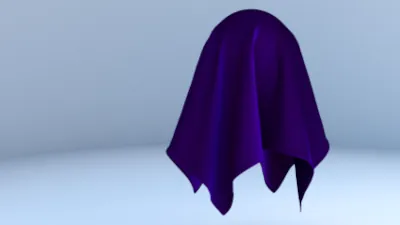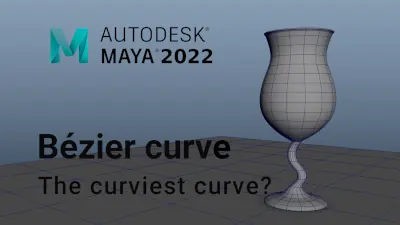Introduction to Maya - Rendering in Arnold
This course will look at the fundamentals of rendering in Arnold. We'll go through the different light types available, cameras, shaders, Arnold's render settings and finally how to split an image into render passes (AOV's), before we then reassemble it i
#
1
28-10-2002
, 06:00 PM
Rigid or Smooth?
If anyone has somthing to say about either techniques then I'm all ears - personally I usually use smooth skinning for most things, but I've recently experimented with rigid and found it a little faster for general deformations.
So guys - which do you choose and why?
#
2
28-10-2002
, 06:33 PM
#
3
28-10-2002
, 07:02 PM
still reckon there shud b an envelope feature

#
4
29-10-2002
, 09:49 AM
Registered User
Join Date: Oct 2002
Join Date: Oct 2002
Location: Taunton, UK
Posts: 128
#
5
29-10-2002
, 01:41 PM
Kurt
#
6
17-11-2002
, 02:03 PM
re rigid or smooth????/
Ahh summer is just around the corner here in Australia. Ha ha.
I have been researching deformation processes in Maya for a while now.
my latest techinque is to use smooth binding (minimum weight painting) on SUBD geometry (poly's and nurbs same) with wire deformers to control muscle,bone and ligament deformations.
It is quite simple to setup:
smooth bind the character
make the character's skin 'live'
draw nurbs curves where you want to control the deformation, ie. around a joint (elbow for example)
create falloff curves by same method away (say up the arm near armpit and at forearm) from elbow joint.
duplicate the original curve at elbow and move away from geometry.
create a wire deformer using the created curves (with holders option using the falloff curves)
parent the wire curves to the appropriate bones
select the duplicated original curve and then the original curve (at elbow) and create a blendshape deformer from this.
Using Set driven key create deformation effects for when the arm is straight and fully bent (connect blendshape with rotation of elbow joint). The moved cv's on the blendshape curve will effect the area of the elbow joint creating nice muscle, bone and ligament deformations.
for added realism
select the characters skin and create a jiggle deformer to create secondary motion when the arm moves (upper arm flab moving around etc..) paint where you want to jiggle deformer to be (helps speed up interaction) and also the jiggle weight.
A dodgy Arm example link:
Hope this helps
re Jim
Mayan elder......only in years.....
#
7
17-11-2002
, 08:40 PM
 will have to try that out sometime.
will have to try that out sometime.
#
8
21-11-2002
, 01:22 AM
#
9
21-11-2002
, 12:26 PM
Registered User
Join Date: Oct 2002
Join Date: Oct 2002
Location: Apeldoorn, Holland
Posts: 32
What do the nurbs curves look like that you used to create a wire deformer around the arm?
Are they radial curves "around" the elbow or are they lateral "along" the outside of the elbow?
Could you perhaps illustrate what they look like in wireframe?
This looks very interesting but I want to make sure I understand exactly what you mean.
Thanks
#
10
24-11-2002
, 07:00 AM
re rigid or smooth????/
I used radial, but you could try either or both. the main advantage I see for using 'wire' deformer is that you can utilize blendshape and model the arms deformation procedurally without having to model the 'actual' arm while it is bent. also the wire seems to be quick for updates so as to not slow down performance when moving your character.
re Jim
Mayan elder......only in years.....
Posting Rules Forum Rules
Similar Threads
Issue with Translating/Rotating Rigid Bodies
by TheLombax in forum Dynamics & Special Effects replies 6 on 06-03-2014
Combining Rigid and Smooth Bind
by pixarpixie in forum Maya Basics & Newbie Lounge replies 1 on 21-08-2012
Smooth Bind vs Rigid Bind
by Gun-Kata in forum Animation replies 2 on 10-05-2004
Rigid Binding & Smooth Binding
by strytus in forum Animation replies 3 on 14-07-2003
Smooth Bind vs Rigid bind?
by ade90054 in forum Maya Basics & Newbie Lounge replies 4 on 07-12-2002
Topics
Free Courses
Full Courses
VFX News
How computer animation was used 30 years ago to make a Roger Rabbit short
On 2022-07-18 14:30:13
Sneak peek at Houdini 19.5
On 2022-07-18 14:17:59
VFX Breakdown The Man Who Fell To Earth
On 2022-07-15 13:14:36
Resident Evil - Teaser Trailer
On 2022-05-13 13:52:25
New cloud modeling nodes for Bifrost
On 2022-05-02 20:24:13
MPC Showreel 2022
On 2022-04-13 16:02:13













